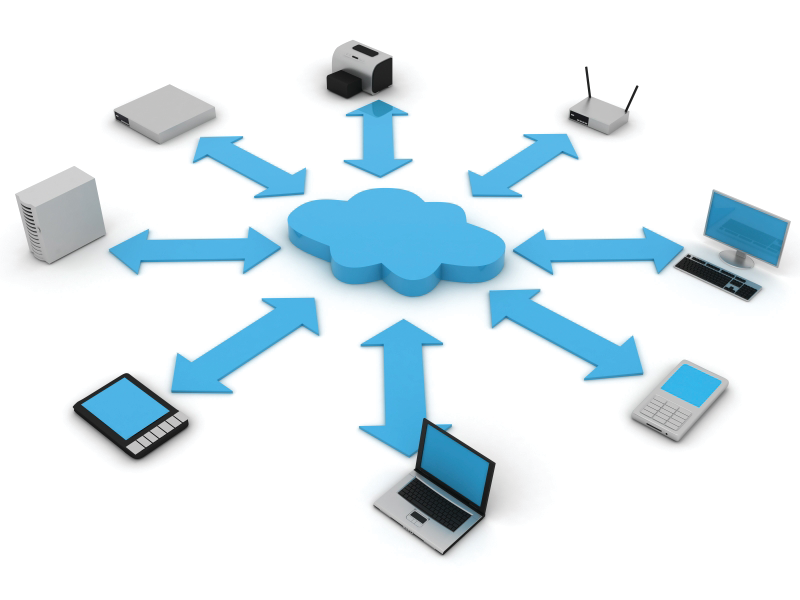Accounting
The “3 Cs” of the Cloud — Does Your Firm Fit?
Simply put, “cloud” systems are deployed outside your organization, typically accessed through the Internet.
Aug. 28, 2013

From the Sept. 2013 issue.
You’d buy a shirt for how it fits you– not for how it looks on 1,000 other people.
So it shouldn’t matter that 6 in 10 companies already have at least one “cloud” application. Or that the “cloud services market” (apparently that’s you) will double in 4 years, from $45B to $95B. No, what matters more than any “cloud” hoopla is if it really fits. Stop wondering if the cloud is a fit for your firm; see if your firm fits the cloud.
The Cloud, Clarified. Simply put, “cloud” systems are deployed outside your organization, typically accessed through the Internet. Software and hardware are completely external. But users experience these “software-as-a-service” (SAAS) applications pretty much the same as systems inside your firm. A cloud solution can eliminate much of the cost, expertise, and infrastructure needed to install and maintain internal systems. Yet many feel that control, security, and access concerns offset these cloud advantages.
Change, Competence, Cost. To understand where your firm sits on the spectrum of risk and reward, reflect on 3 attributes:
Change. Keep in mind your firm’s attitude towards innovation in the face of change and competition. If a technology advantage is a key to your strategy, the cloud’s efficiency and cost savings make sense. Also consider tolerance for change. Cloud solutions offer frequent, often automatic, updates– great for users who like the latest features, and good for IT departments that don’t have to install every update.
Yet frequent change sometimes bothers partners or staff slow to embrace technology. If that’s the case, internal systems let firms like these dictate the pace of change. Finally, think about ongoing needs, like unique reports or special workflows. Are these frequent and urgent?
Cloud-based practice-management systems are typically packaged with common workflows repeatable across most firms. Advanced cloud solutions will even allow broad configuration, but internal systems could work best for firms with highly unique– and constantly changing– needs.
Competence. In firms large or small, internal systems work well for those with a skilled IT staff to maintain hardware, deploy & update software, and keep everyone connected. But your firm may not want to be good at those things. Installed offsite and maintained for you, cloud-based systems are a great “hands-off” approach. And pushing maintenance responsibilities to a cloud solution frees IT for strategic work like business intelligence, or even application development.
Internal IT teams don’t often lack the skills necessary to manage hardware, monitor security, or maintain software– but focus is different. Internal IT teams are often resource-constrained, facing a challenging workload without optimal staff. Splitting time across so many responsibilities, while putting out any fires that may arise, doesn’t necessarily introduce risk into an internal environment– but it does mean lots of stress worrying about possible viruses, hackers, or bugs.
Firms seeking to eliminate risk or worry should consider the cloud: A cloud-solution brings with it a team solely dedicated to maintaining the software, ensuring its availability, and protecting it from malware or virus threats. And unlike an internal IT department, the cloud-solution’s vendor is bound to the service-level agreement stipulated in a subscription or contract. Where an internal IT department might falter under an increasing workload, a cloud solution is obligated to a constant service level no matter how many clients its vendor takes on.
Confidence. Your data-center may be an entire climate-controlled limited-access floor, or a closet in the back-office. That you can even find your data-center is an important contrast: you’ll never “walk by” the data-center of a cloud solution.
Beyond the fact that it’s offsite (often an undisclosed location,) data-centers for any appropriate cloud solution are typically guarded by physical security and video surveillance, and double-verify anyone seeking to be anywhere near the systems or the data within them. And there’s usually more than one– cloud solutions providers obligated to ensure availability and security typically provide a least one redundant environment, ready-to-go in the case of any issues.
Firms wanting high availability and exceptional security might find the cloud a better option than the cost and complexity of bringing an on-site data-center to a similar level. Yet your data is still yours– it shouldn’t be mingled with anyone else’s, and completely available to you for reporting or in any way you might need it. An internal system might be a better option if you don’t get this assurance from the cloud.
Making the Move. Internal practice-management systems have brought accuracy and efficiency for years. Yet the cloud’s growing adoption may have you curious about its advantages. Keep in mind as you consider the cloud:
- Your firm’s culture, and your overall technology strategy aligns with the cloud.
- The cloud complements and helps your IT resources flourish as a strategic part of the firm.
- Your cloud solution surpasses the access, availability, and security you have today.
